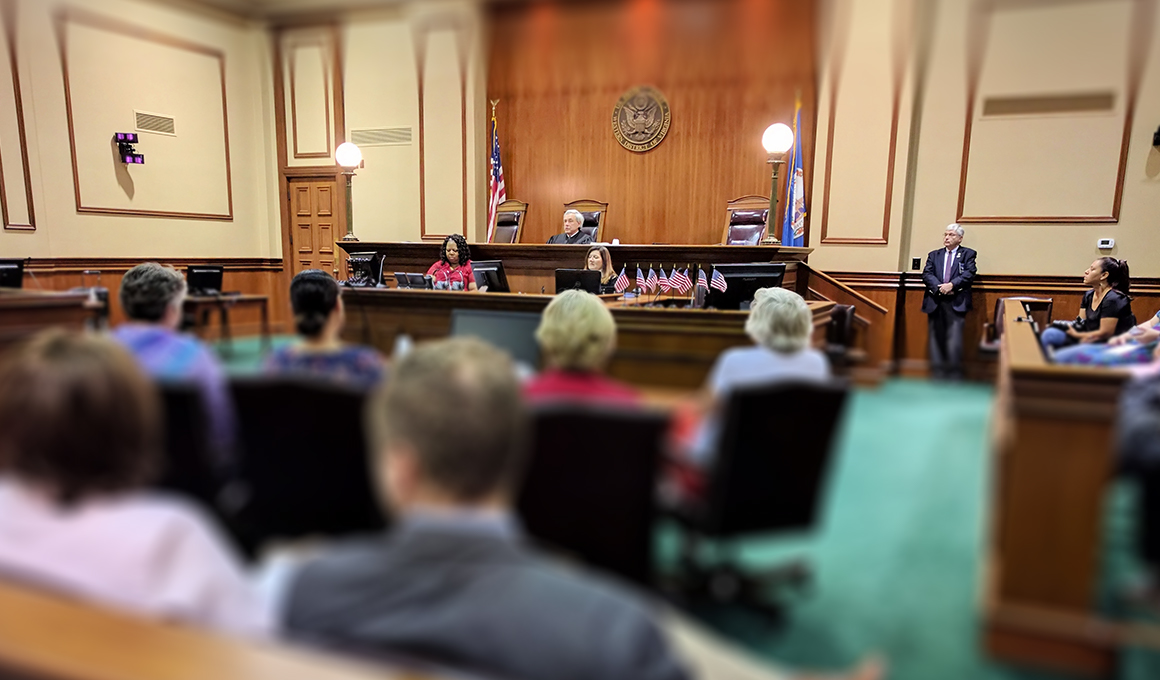Exactly How Test Presentations Enhance Your Argument and Convince Jurors
Trial presentations serve as a pivotal device for enhancing legal disagreements and convincing jurors. The tactical use of visuals not just clarifies complex information yet also captures jurors' attention extra properly than words alone.

Relevance of Visual Aids
Visual aids play an important function in improving the efficiency of trial presentations, as they can significantly raise audience engagement and retention of info. In the context of a trial, where jurors are charged with handling facility details, visual help offer to streamline and clear up essential points. Charts, charts, and photos can share information and principles that might or else bewilder or puzzle jurors, permitting for a more straightforward understanding of the evidence provided.
In addition, aesthetic aids aid in keeping juror focus throughout the process. By damaging the dullness of verbal statement, these tools can punctuate important debates, making them extra remarkable. Reliable visual aids can also evoke emotional responses, which can be critical in convincing jurors to line up with the speaker's story.

Crafting Compelling Stories
An engaging story is necessary in test discussions, as it acts as the foundation of efficient persuasion. It enables attorneys to weave together truths, evidence, and psychological elements into a coherent tale that reverberates with jurors. This narrative framework makes it possible for jurors to recognize the intricacies of the situation while directing them through the lawyer's disagreement.
To craft an engaging story, lawyers need to concentrate on clarity and comprehensibility. Furthermore, the use of brilliant summaries can produce psychological pictures that aid jurors picture the events, making the story a lot more unforgettable.
In addition, integrating key motifs throughout the presentation enhances the core message and aids in retention - trial presentations. The story must not only communicate information however also evoke a feeling of justice, highlighting the stakes included. Inevitably, a well-constructed story promotes a link between the jurors and the situation, placing the attorney's debate as both credible and engaging, consequently raising the chance of a positive decision

Involving the Court Psychologically
Reliable court engagement rests on the lawyer's ability to connect with view it now jurors on an emotional degree. This link can considerably affect jurors' assumptions and their ultimate decision-making. Using psychological allures allows attorneys to humanize the case, transforming abstract lawful principles into relatable experiences. By presenting real-life tales or testimonies, lawyers can evoke compassion and concern, fostering a deeper understanding of the problems at risk.
Aesthetic help, such as photographs or video clips, can better enhance emotional involvement, offering jurors with vibrant representations of the situation's human components. Crafting a narrative that highlights the struggles and victories of the people included makes certain that jurors see beyond the legal debates and recognize the human consequences of their decisions.
An attorney's passionate distribution can resonate with jurors, reinforcing their emotional financial investment in the instance. It's necessary to balance psychological charms with factual proof, making sure that jurors feel urged to act while continuing to be grounded in the fact.
Structuring Your Discussion

The body of the discussion should be realistically segmented into bottom lines, each sustained by engaging proof. It is valuable to use storytelling techniques to weave truths right into a story that jurors can conveniently follow. Aesthetic aids, such as graphes and videos, can improve comprehension and interaction, helping to highlight essential pieces of proof.
Real-World Situation Researches
Analyzing real-world instance studies offers indispensable understandings into the art of trial presentations and persuasion. The protection group effectively employed a method that incorporated top-level expert testimonies with multimedia presentations, which mesmerized jurors and inevitably affected their choice.
Another notable instance is the "McDonald's Coffee Case," where the plaintiff's lawyers made use of visuals photos of the injuries sustained by Stella Liebeck. trial presentations. This stark aesthetic proof played a crucial role in conveying the severity of her burns, leading to a significant court award. Such cases show that impactful test discussions commonly depend upon the efficient combination of visuals and narration to evoke emotional reactions from jurors
Additionally, the "Casey Anthony Trial" highlighted the significance of narrative coherence and trustworthiness. The prosecution's failure to develop an engaging timeline reduced their convincing power, underscoring the need of a well-structured discussion. Evaluating these cases discloses that read this effective trial discussions require critical preparation, emotional engagement, and the capacity to resonate with jurors' values and ideas.
Final Thought
Trial discussions significantly boost arguments and encourage jurors through the calculated use of aesthetic aids, engaging narratives, and psychological engagement. A well-structured discussion balances psychological allures with valid evidence, eventually reverberating with jurors' worths.